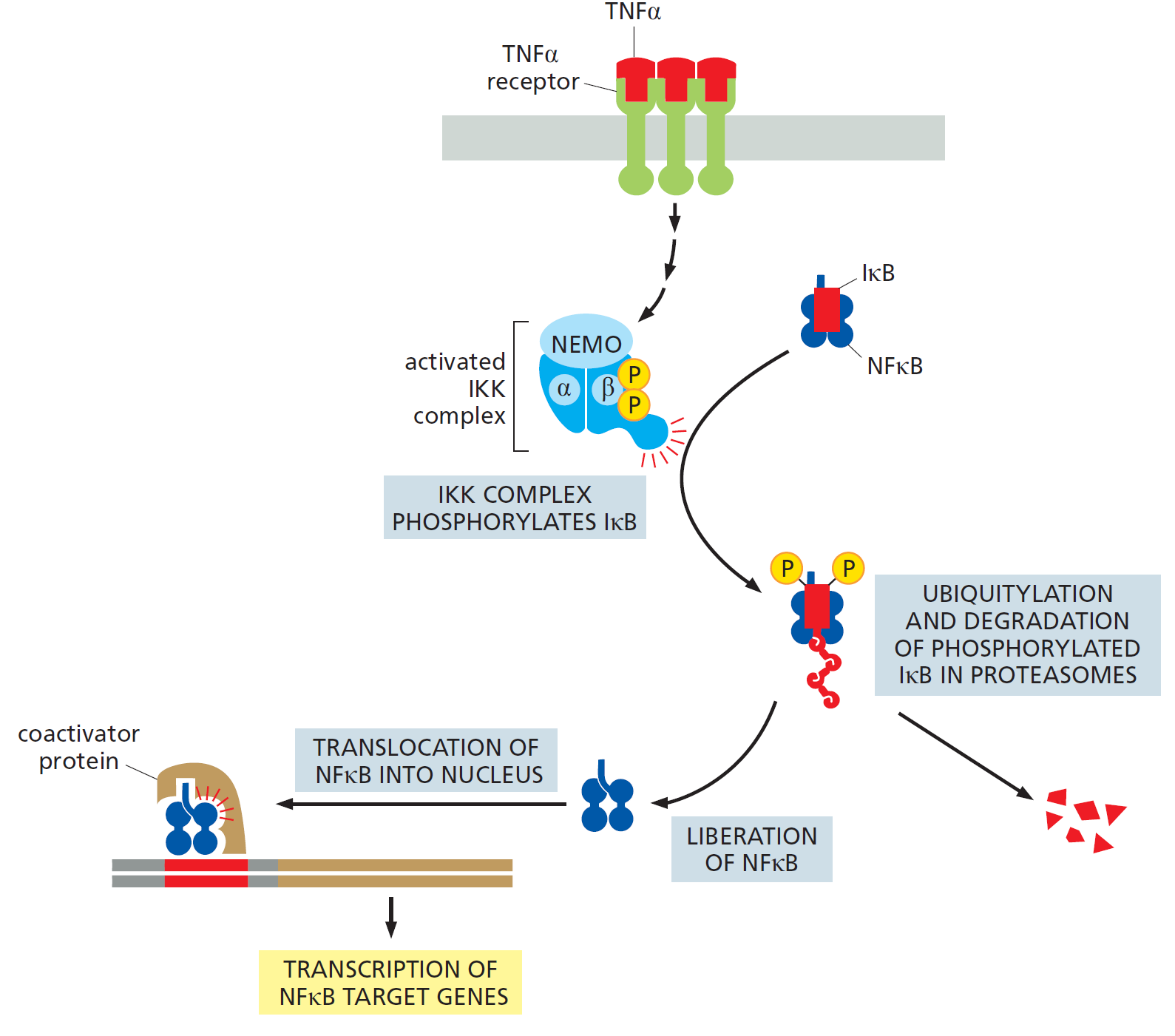Table of Contents
Overview of NFκB Signaling Pathway
- Today we will learn about NFκB Signaling Pathway.
- NFκB is a family of proteins that regulate gene expression in response to various stimuli, such as inflammation, infection, and stress.
- NFκB proteins are normally kept inactive in the cytoplasm by another family of proteins called IκB.
- When a cell is exposed to a signal, such as TNFα, a cytokine that promotes inflammation, the IκB proteins are degraded, allowing NFκB to enter the nucleus and activate the transcription of hundreds of genes that participate in inflammatory and innate immune responses.
- NFκB plays a crucial role in many biological processes, such as inflammation, immunity, and development.
- However, excessive or inappropriate NFκB signaling can also cause damage to the tissue and lead to diseases such as cancer.
- Therefore, the NFκB pathway is tightly regulated by various mechanisms, such as feedback loops, post-translational modifications, and interactions with other signaling pathways.
- Understanding how NFκB is activated and controlled is important for developing new therapies for inflammatory and immune disorders.
Activation of NFκB by TNFα
- TNFα and its receptors are both trimers, meaning they have three subunits each.
- When TNFα binds to its receptors, it causes a rearrangement of the cytosolic tails of the receptors, which now recruit various signaling proteins.
- One of these proteins is a protein kinase that phosphorylates and activates another protein complex called IKK.
- IKK is composed of two kinase subunits, IKKα and IKKβ, and a regulatory subunit called NEMO.
- IKKβ then phosphorylates IκB on two serines, which marks the protein for ubiquitylation and degradation in proteasomes.
- The released NFκB translocates into the nucleus, where it binds to specific DNA sequences and recruits coactivator proteins to stimulate the transcription of its target genes.
NFκB and IκB Families
- There are five NFκB proteins in mammals (RelA, RelB, c-Rel, NFκB1, and NFκB2), and they form a variety of homodimers and heterodimers, each of which activates its own characteristic set of genes.
- There are three major IκB proteins in mammals (IκB α, β, and ε), and the signals that release NFκB dimers do so by triggering a signaling pathway that leads to the phosphorylation, ubiquitylation, and consequent degradation of the IκB proteins.
- There are also other members of the IκB family, such as Bcl-3, IκBζ, and IκBNS, that have different roles in regulating NFκB activity, such as stabilizing, enhancing, or inhibiting NFκB dimers.
Regulation of NFκB Signaling
- The NFκB pathway is regulated by various mechanisms, such as feedback loops, post-translational modifications, and interactions with other signaling pathways.
- Feedback loops involve the induction of genes that either enhance or inhibit NFκB signaling, such as A20, IκBα, and TNFAIP3.
- Post-translational modifications include phosphorylation, acetylation, methylation, ubiquitylation, and sumoylation, which affect the stability, activity, localization, and interactions of NFκB and IκB proteins.
- Interactions with other signaling pathways involve the crosstalk between NFκB and other pathways, such as MAPK, JAK-STAT, PI3K-Akt, and Wnt, which modulate NFκB signaling in response to different stimuli and contexts.
